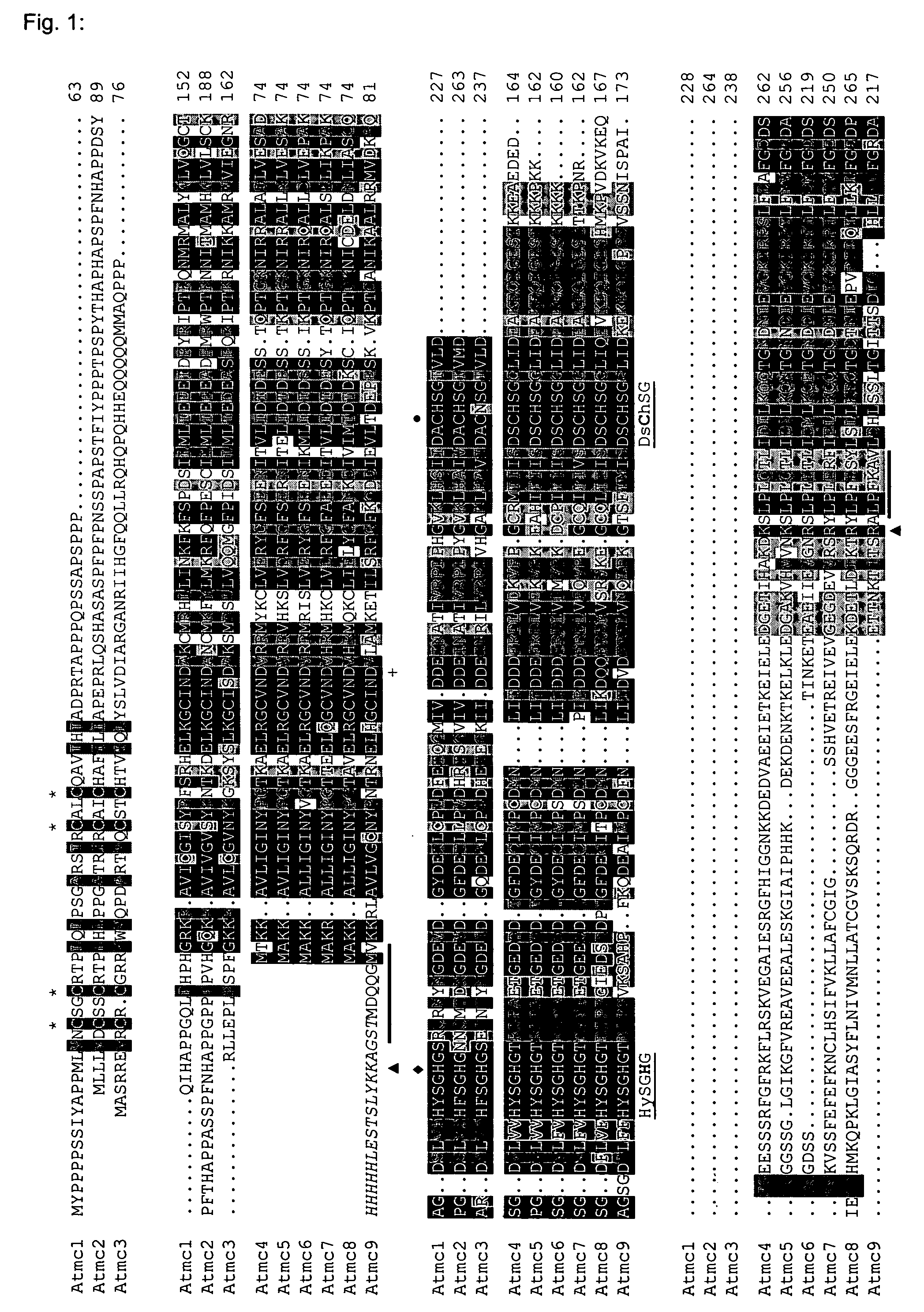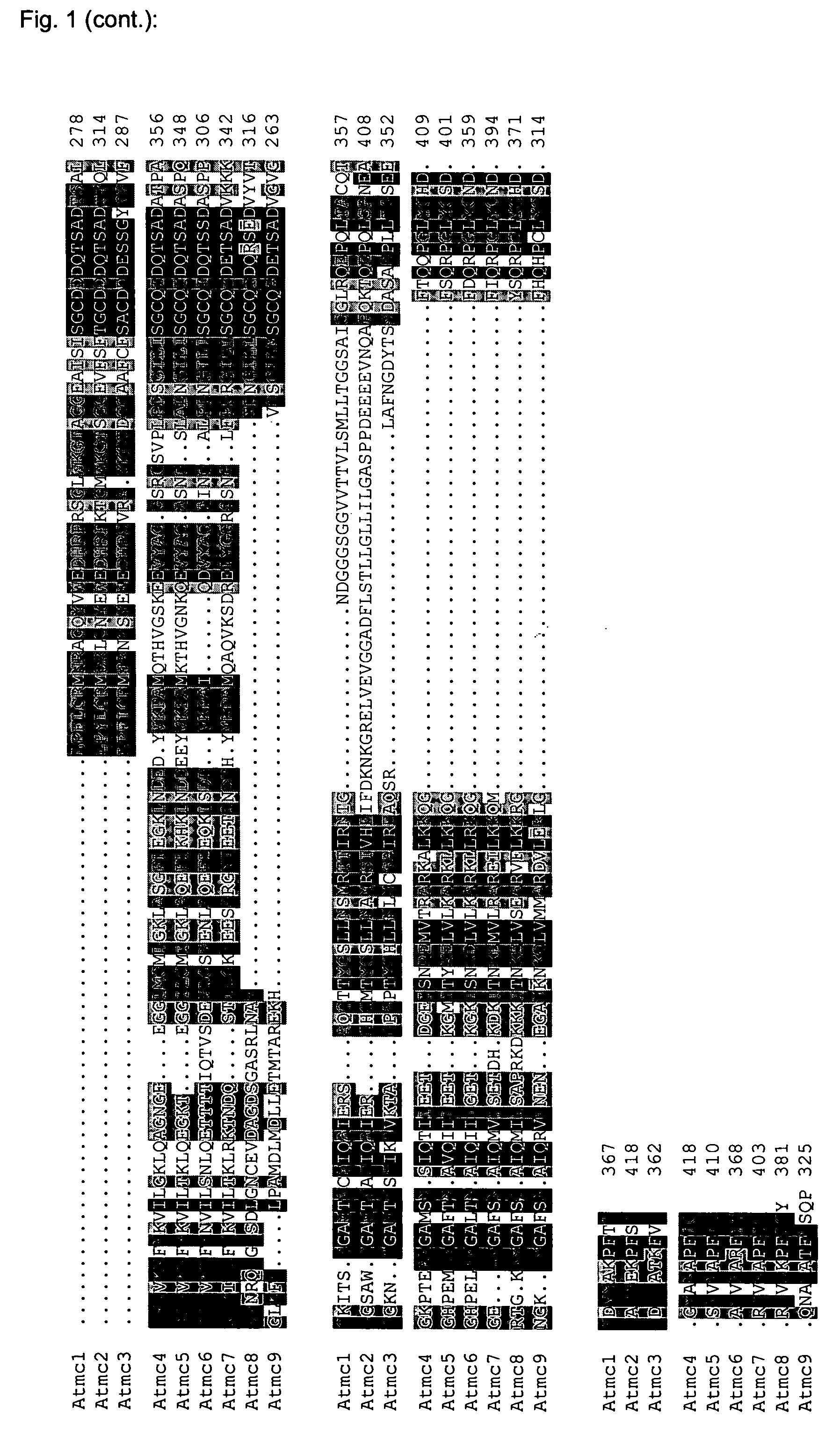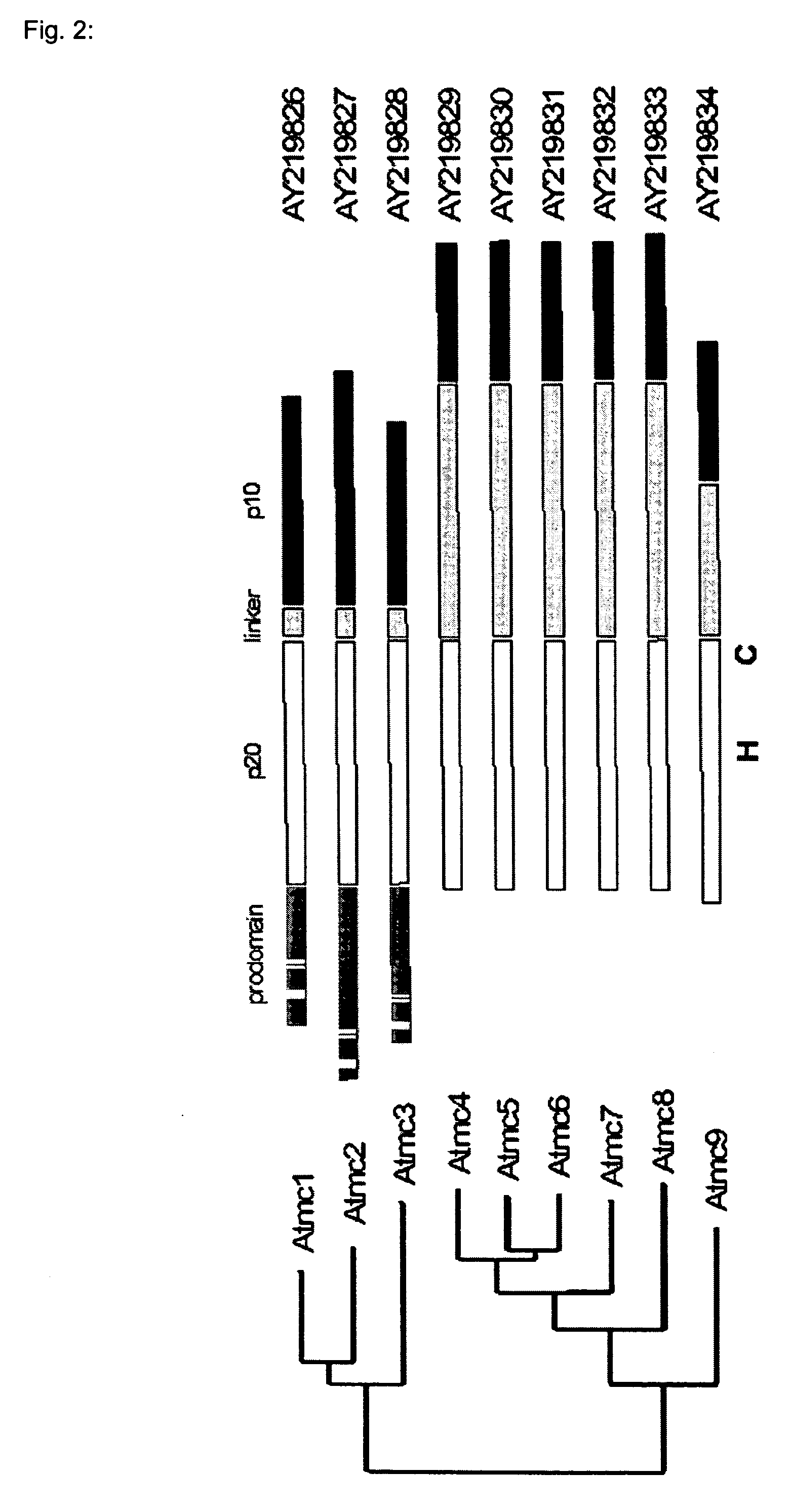Novel class of metacaspases
- Summary
- Abstract
- Description
- Claims
- Application Information
AI Technical Summary
Benefits of technology
Problems solved by technology
Method used
Image
Examples
example 1
Identification and Cloning of Arabidopsis thaliana Metacaspases
[0061] Using the sequences of eight Arabidopsis metacaspases as reported by Uren et al. (2000), a sequence homology search (blastp, Altschul et al., 1997) was performed against an in-house collection of protein sequences corresponding to predicted Arabidopsis protein-encoding genes (EUGENE, Schiex et al., 2001). This resulted in the detection of one extra putative metacaspase gene (genes named Atmc1 to −9). The alignment of the corresponding protein sequences is shown in FIG. 1, and the corresponding family tree in FIG. 2. RT-PCR was performed on pooled first-strand cDNA derived of Arabidopsis roots, leaves and inflorescences. Except for Atmc8, we obtained PCR products of the predicted length with all primer pairs. Several attempts to isolate cDNA for Atmc8 failed. This could mean that Atmc8 is only expressed under specific conditions, that gene prediction is not correct for Atmc8, or that it is a pseudogene. Until now,...
example 2
Analysis of the Primary Structure of Metacaspases
[0063] Three of the Arabidopsis metacaspases (1 to 3) possess an N-terminal extension as compared to the other six proteins, and were previously termed “type I metacaspases” (FIG. 2) (Uren et al., 2000). These extensions could represent a prodomain, also present in mammalian upstream “initiator” caspases and as such possibly responsible for protein-protein interactions between metacaspases and oligomerizing components of different signaling complexes, resulting in subsequent metacaspase activation (Earnshaw et al., 1999). The Arabidopsis metacaspase “prodomains” contain two putative CxxC-type zinc finger structures—one of which is imperfect for Atmc3, and as such are similar to the Lsd-1 protein, a negative regulator of HR with homology to GATA-type transcription factors (Uren et al., 2000; Dietrich et al., 1997). Furthermore, the prodomains are rich in proline (Atmc1 and 2) or glutamine (Atmc3). The remaining metacaspases (4 to 9) l...
example 3
Evolutionary Analysis of Metacaspases
[0065] To determine the evolutionary relationship of the Arabidopsis metacaspases with other organisms, phylogenetic trees were constructed. As sequence data for many organisms is not complete, only the p20 region was used for alignment. FIG. 3 shows an unrooted maximum-likelihood tree with metacaspases from plants, fungi, Euglenozoa, Rhodophyta, Alveolata and related proteases from prokaryotes. The type I metacaspases occur in a broad range of taxa (budding and fission yeast, plants, Trypanosoma and Plasmodium), whereas type II metacaspases, characterized by the absence of a prodomain, are specific to plants, and can be found in monocots, dicots, mosses and ferns. Due to the incomplete sequence data in public databases, the alignment used for the generation of the phylogenetic tree in FIG. 3 could not lead to the conclusion whether known metacaspases from the green alga Chlamydomonas and the red alga Porphyra were type I or type II. Nevertheles...
PUM
| Property | Measurement | Unit |
|---|---|---|
| Molar density | aaaaa | aaaaa |
| Molar density | aaaaa | aaaaa |
| Molar density | aaaaa | aaaaa |
Abstract
Description
Claims
Application Information
 Login to View More
Login to View More - R&D
- Intellectual Property
- Life Sciences
- Materials
- Tech Scout
- Unparalleled Data Quality
- Higher Quality Content
- 60% Fewer Hallucinations
Browse by: Latest US Patents, China's latest patents, Technical Efficacy Thesaurus, Application Domain, Technology Topic, Popular Technical Reports.
© 2025 PatSnap. All rights reserved.Legal|Privacy policy|Modern Slavery Act Transparency Statement|Sitemap|About US| Contact US: help@patsnap.com



